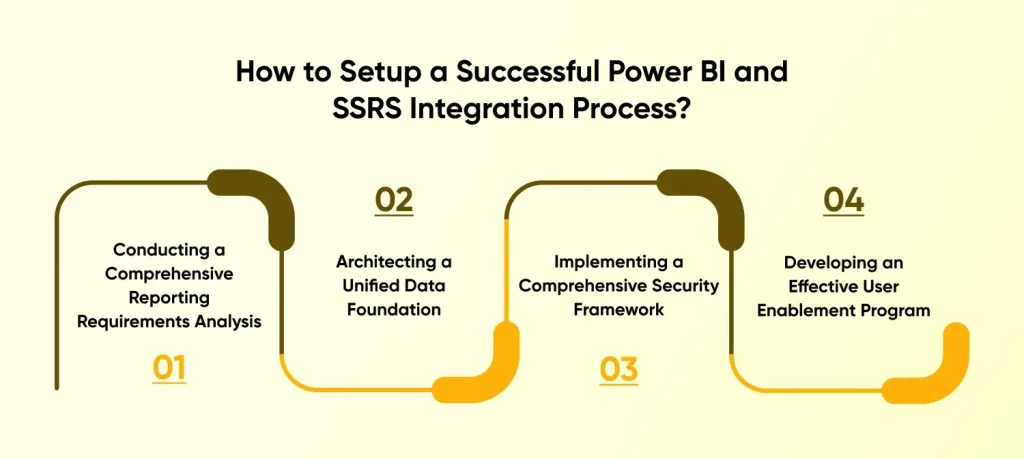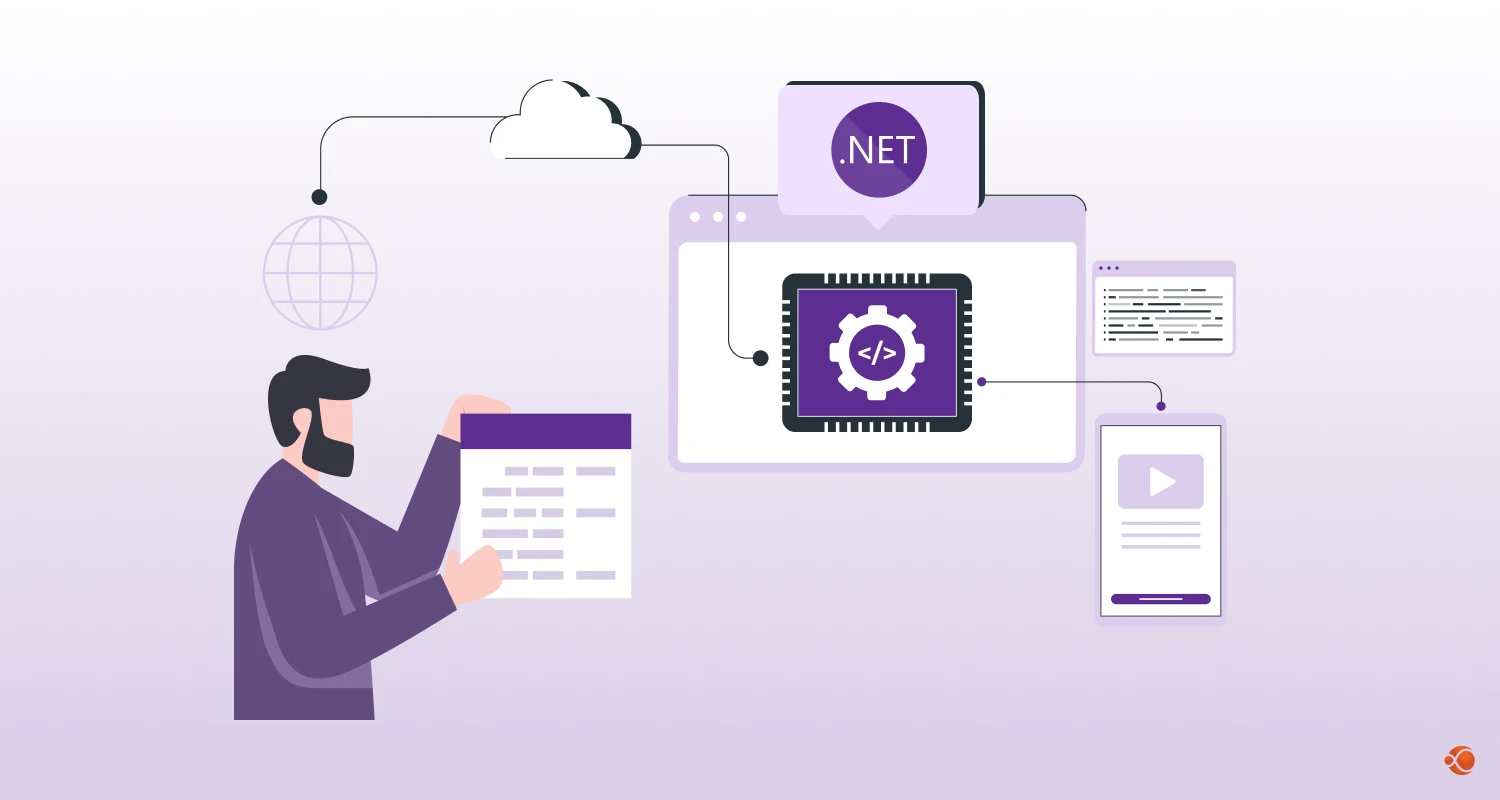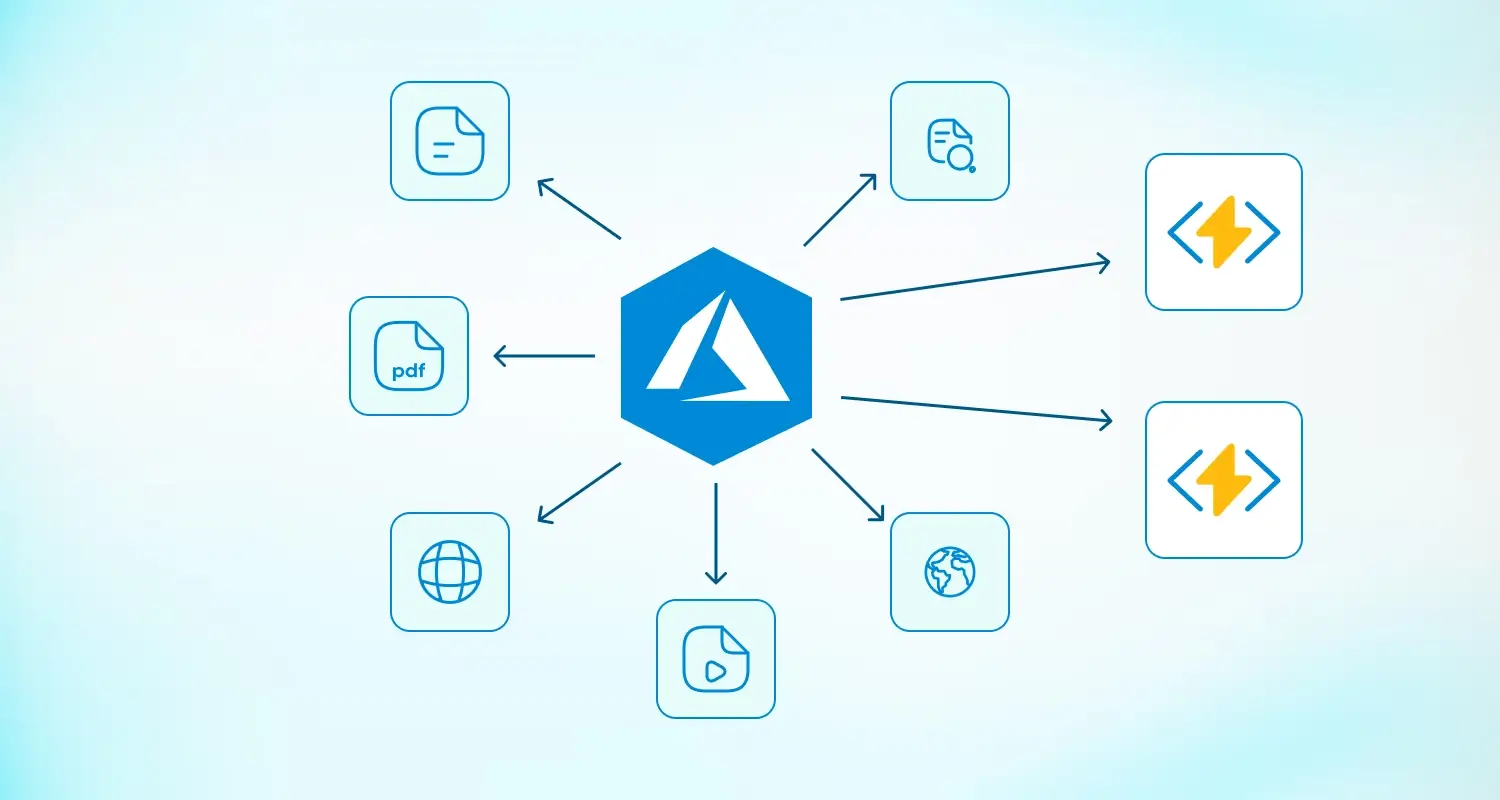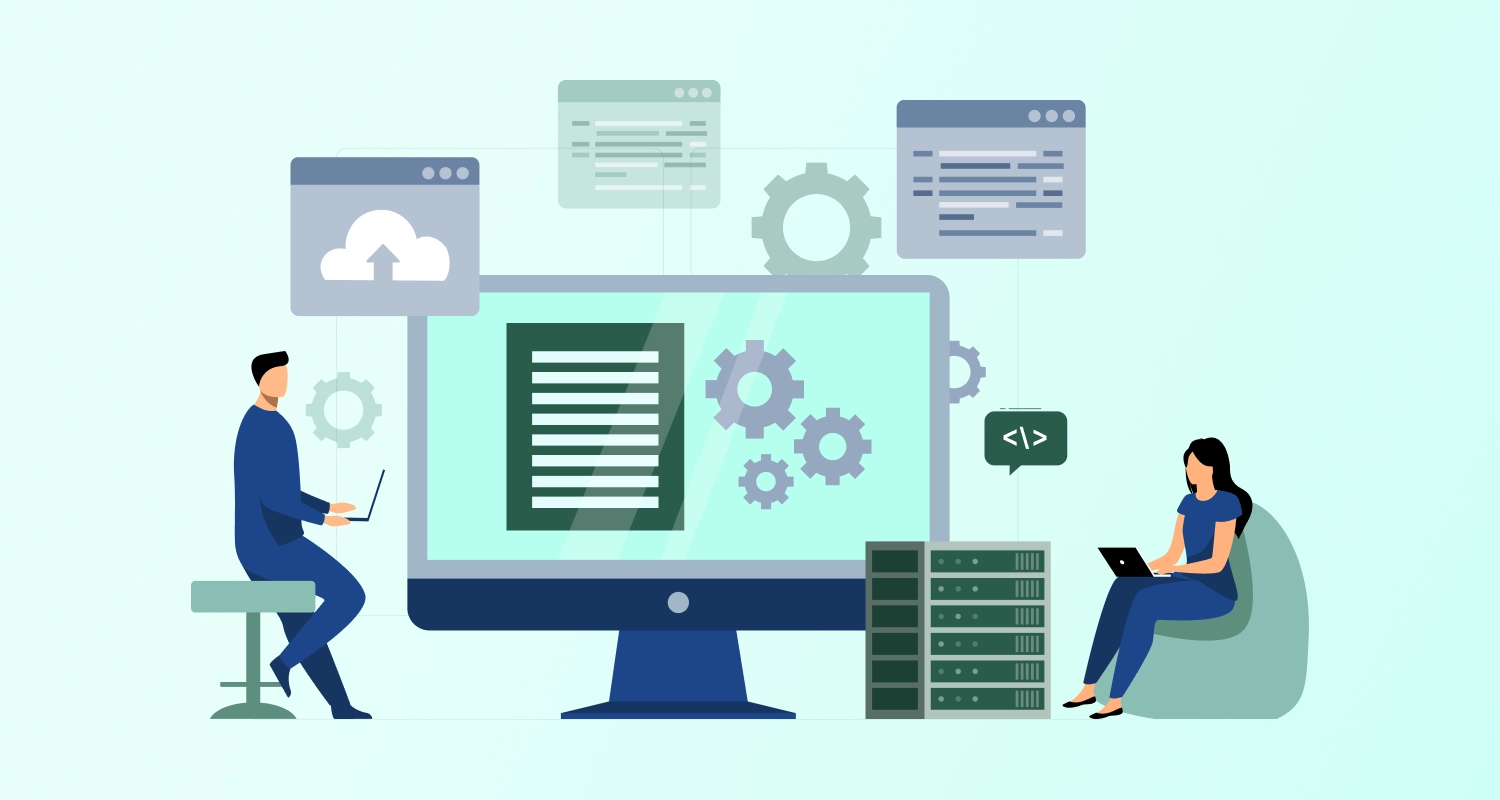Modern businesses need access to smart, capable and intelligent reporting solutions that help them make data-driven decisions. The main concern with modern AI-based advanced business reporting tools is, there are many players in the market, which raises the concern of reliability and consistency in terms of accurate performance. With new entry players every day, navigating the right tool to unlock advanced business insight can be challenging.
This is where Microsoft enters the game with two powerful tools – Power BI and SSRS (SQL Server Reporting Services). Since these tools are developed and backed by Microsoft, reliability or consistency issues are mainly taken care of.
The next question most organizations have is whether to choose Power BI or SSRS. The answer is quite simple, you don’t have to make a choice, you can and must use both. Power BI and SSRS integration helps in unlocking advanced business insights, since they complement each other.
Key Differences Between Power BI and SSRS
Today, we will discuss both the platforms in greater detail to identify their strengths and capabilities, and then how combining Power BI and SSRS can maximize your reporting capabilities.
Power BI: Interactive Data Visualization
Power BI is mainly popular for its ability to create interactive dashboards with intuitive data visualisations. It transforms complex data into accessible insights using dynamic, user-driven interfaces. The platform can connect hundreds of data sources and provide powerful self-service business intelligence capabilities that can be used by professionals of all skill levels.
Many organizations rely on Power BI for their data visualization requirements, mainly when they need real-time analytics and interactive explorations. Power BI follows a cloud-first architecture which enables every employee to have mobile access to key insights and business metrics.
SSRS: Enterprise Reporting
SSRS delivers traditional, paginated reporting with precise formatting control that meets formal business documentation requirements. It generates professional operational documents like invoices, statements, and standardized reports with pixel-perfect precision and consistent layouts across all delivery formats.
The platform offers scheduled delivery options, extensive export format support, and enterprise-grade security features. SSRS provides the document generation capabilities that many regulated industries and enterprise operations require for compliance and business processes.
Why Use Power BI with SSRS?
The technology warfare is no new concept, we always compare Angular vs React, Azure vs GCP and other such popular framework or library comparisons to see which one is better than the other. However, not tools are meant to be in direct competition, some are built with a sense of complementing each other. This is true for Power BI and SSRS, two very capable reporting tools by the same company, that serve different sub-purposes of the same overall purpose.
As to why you should integrate the two, and why not just rely on one technology, a study by Forrester Research indicates organizations using integrated reporting solutions see 34% higher data utilization rates and improved decision-making across all business levels.
Benefits of SSRS Integration with Power BI Service:
- Complementary Strengths: Each tool addresses different reporting requirements effectively.
- End-to-End Reporting: Building everything from operational reports to executive dashboards.
- Consistent Data: Maintain a single version of truth across all reporting platforms.
- Leverage Existing Investments: Utilize your current Microsoft technology stack.
- Migration Path: Transition gradually from SSRS to Power BI.
Integration Methods for Power BI and SSRS
A successful SSRS integration with Power BI and reporting service requires a dedicated effort and clarity in thought and vision. There are multiple ways to make this integration possible, it is important to select the right approach that meets your organization needs. We will examine three proven methods that organizations use to create a cohesive reporting ecosystem, each with different technical requirements and business benefits.
Method 1: Power BI Report Server
Power BI Report Server is an on-premise reporting server that uses a web portal for providing all reports and tools for managing them and setting KPIs. This web portal also has simple-to-follow tools to generate Power BI reports, mobile reports, paginated reports and more. The reports can be generated and viewed in the web browser, mobile device or be sent as an email attachment to your preferred mailing address.
How to integrate Power BI and SSRS using Power BI Report Server Method?
- Make use of Power BI Report Server
- Configure the server with appropriate permissions
- Create and publish reports to the server
- Access reports through the unified web portal
Method 2: Embedding SSRS Reports in Power BI
You can also embed SSRS reports in Power BI dashboards. It creates a seamless user experience for users that want an interactive analytics interface and properly formatted reports. This embedded approach allows users to use both platforms for their strengths while providing a unified reporting interface.
The implementation process includes:
- Utilize SSRS visual in Power BI Desktop
- Connect to your SSRS server
- Select the desired report
- Configure parameters and display options
- Publish to Power BI Service
Method 3: API Integration for Custom Solutions
For organizations that have custom requirements that can’t be matched with the above two methods, leveraging advanced Power BI development services from a custom software development company can be a strategic choice. Such companies can build bespoke integration solutions, using APIs from both platforms and configuring them to match your exact business requirements.
The custom integration typically involves:
- Using SSRS APIs with Power BI and for smooth integration
- Creating unified reporting portals with consistent branding
- Implementing single sign-on across platforms
- Developing custom report distribution systems

Practical Use Cases: How Industries Leverage Power BI and SSRS Integration
Understanding how different industries integrate Power BI with web app and manage SSRS integration reveals the practical value this combination delivers. These real-world use cases showcase how organizations unlock reporting capabilities while maintaining industrial compliance requirements.
Financial Services: Balancing Analytics with Regulatory Compliance
Financial institutions face unique reporting challenges that require both interactive analysis and precisely formatted documentation. An integrated Power BI and SSRS solution addresses these diverse requirements while maintaining consistency across all financial reporting functions.
Financial service implementations typically include:
| Component | Primary Function | Key Benefits |
| Power BI Dashboards | Real-time financial KPIs and interactive trend analysis | Faster decision-making on investment strategies and risk management |
| SSRS Reports | Regulatory statements with precise formatting requirements | Follows SEC, FINRA, and other financial regulations |
| Integrated Data Model | Consistent definitions of financial metrics | Single version of truth across all financial reporting |
Healthcare: Enhancing Patient Outcomes Through Integrated Analytics
Healthcare organizations have many regulations that require both – analytical insights and standardized documentation. Combining Power BI and SSRS gives the perfect balance between innovation and compliance for healthcare reporting needs.
Advanced healthcare implementations feature:
| Component | Primary Function | Key Benefits |
| Power BI Clinical Dashboards | Population health trends and patient outcome visualizations | Improved treatment protocols and resource allocation |
| SSRS Patient Documentation | Regulatory compliance reports and standardized medical forms | Consistent documentation for HIPAA compliance |
| Automated Workflows | Scheduled report generation and distribution | Reduced administrative burden on clinical staff |
Manufacturing: Optimizing Operations with Comprehensive Reporting
Manufacturing companies require real-time operational insights alongside detailed quality and compliance documentation. The integrated approach combines live production monitoring with the detailed reporting required for quality management systems.
Effective manufacturing implementations include:
| Component | Primary Function | Key Benefits |
| Power BI Production Dashboards | Real-time efficiency metrics and predictive maintenance indicators | 22% average increase in overall equipment effectiveness |
| SSRS Quality Documentation | Detailed quality control reports with ISO compliance documentation | Streamlined audit processes and regulatory compliance |
| Integrated IoT Data Streams | Sensor data visualization and automated alerts | Early detection of production issues before quality suffers |
How to Setup a Successful Power BI and SSRS Integration Process?

Implementing an integrated Power BI and SSRS solution requires more than technical knowledge—it demands strategic planning across multiple dimensions. Organizations that adopt these proven practices report significantly higher success rates, better user adoption, and stronger returns on their business intelligence investments.
1. Conducting a Comprehensive Reporting Requirements Analysis
Before implementing any integration, thoroughly analyze your organization’s reporting needs across all business units. This critical first step ensures your solution addresses actual business requirements rather than simply deploying technology for its own sake.
Your requirements analysis should include:
- Interviewing stakeholders from different departments to understand their specific reporting needs
- Documenting the types of decisions being made using reports and what data supports them
- Categorizing report requirements based on interactivity needs, distribution requirements, and formatting complexity
- Creating a decision matrix that maps reporting needs to the appropriate platform (Power BI, SSRS, or combination)
2. Architecting a Unified Data Foundation
A robust, unified data architecture forms the critical foundation of any successful reporting integration. Without coherent data management, even the most sophisticated reporting tools will produce inconsistent results that undermine business trust in your analytics.
Your data architecture strategy must prioritize:
- Developing a common data model that standardizes definitions across all reporting platforms
- Using a custom set of business rules and calculations for key metrics
- Creating shared data sources that serve both Power BI and SSRS environments
- Establishing a data warehouse or lake as the single source of truth for enterprise reporting
- Documenting data lineage to ensure transparency in how metrics are calculated
3. Implementing a Comprehensive Security Framework
Hire Power BI developers that implement system-wide security from the start of any integration efforts. Reporting systems often contain sensitive business information that need appropriate protection while remaining accessible to authorized users.
Your security implementation should include:
- Developing row-level security policies that work consistently across both platforms
- Creating role-based access control systems aligned with organizational structures
- Implementing consistent authentication mechanisms across all reporting interfaces
- Establishing data encryption standards for sensitive information
- Creating accurate audit trails for compliance and governance purposes
4. Developing an Effective User Enablement Program
Even the most technically sound implementation fails without proper user adoption. A complete enablement program ensures users understand how to use both platforms effectively within your integrated reporting environment.
Your user enablement strategy should include:
- Creating role-specific training programs for different user personas
- Developing comprehensive documentation with practical examples
- Establishing a center of excellence to provide ongoing support
- Implementing feedback mechanisms to continuously improve the reporting ecosystem
- Identifying and nurturing power users who can become internal champions
SSRS to Power BI Migration Considerations
Many organizations that have prealready set up SSRS implementations are now strategically adopting Power BI. This transition represents more than a technical migration—it’s a shift in reporting philosophy that requires careful planning and execution to ensure success.
A successful migration strategy includes these key elements:
- Inventory existing reports: Add all existing SSRS reports and their usage patterns to understand the full scope.
- Identify migration candidates: Select reports suitable for Power BI conversion based on interactivity needs and user requirements.
- Transform gradually: Migrate reports in phases rather than all at once to minimize business disruption.
- Leverage .NET Development Services: Create custom migration tools for complex scenarios that require specialized approaches.
| Migration Approach | Best For | Challenges |
| Parallel Systems | Organizations with diverse reporting needs | Managing two platforms |
| Phased Migration | Large report portfolios | Extended transition period |
| Complete Replacement | New implementations | Training requirements |
Advanced Integration Techniques for Enterprise Applications
For organizations seeking deeper integration between reporting systems and their custom applications, advanced techniques enable embedding reporting capabilities directly into business applications. These approaches create seamless user experiences where reporting becomes an integrated part of operational workflows.
Incorporating Power BI into Web Applications
Embedding Power BI reports in custom web applications helps create seamless data experiences that improve decision making and user engagement. This approach allows businesses to maintain consistent branding while using Power BI’s powerful visualization capabilities.
Integrate Power BI Into Your Web App with these essential steps:
- Use Azure AD for secure authentication and registration of your application
- Set up the Power BI embedding API with appropriate permissions
- Generate embedding tokens for secure user access
- Use the JavaScript SDK in your web app
- Configure interactive features based on user roles and needs
SSRS Integration with ASP.NET
For organizations with existing .NET applications, SSRS integration provides powerful reporting capabilities directly within your custom software. This approach leverages Microsoft’s comprehensive development stack for cohesive enterprise solutions.
Integration of SSRS with ASP.NET delivers many strategic advantages. These include:
- Use the ReportViewer control in ASP.NET app
- Implement parameterized reports for dynamic, user-specific content
- Create custom report delivery extensions for specialized distribution needs
- Develop report-generation workflows that integrate with business processes
To achieve these advanced integrations, many organizations hire ASP.NET developers with specialized expertise in both reporting systems and application development.
Future Trends: Power BI and SSRS Evolution
Microsoft has a well-planned and capable business intelligence ecosystem, with new tools and features coming out every now and then, leading to a maturing environment that can greatly benefit teams. They also work consistently on their previous products like Power BI and SSRS. Understanding these updates can help businesses make better decisions about how to structure their reporting investments and implementation approaches.
Our dedicated development team continuously monitors these developments to provide clients with forward-looking guidance on reporting strategies.
Key trends shaping the future of business reporting include:
- Power BI: Expanding AI features, improved data modeling, and natural language processing
- SSRS: Improved cloud integration, modern rendering technologies, and tighter Power Platform integration
- Integration: Deeper connections between products in the Microsoft ecosystem with unified administration
| Platform | Key Upcoming Features | Business Impact |
| Power BI | AI-driven insights | Automated anomaly detection |
| SSRS | Cloud-native architecture | Improved scalability |
| Integration | Unified security model | Simplified administration |
Conclusion: Maximizing Your Reporting Potential
Use Power BI and SSRS for creating a powerful reporting ecosystem that addresses the full spectrum of business intelligence needs. Having the basic understanding of both platforms, understanding the available integration options, any team can upscale their reporting capabilities and maximize on their Microsoft investments. Consider working with a custom software development company to benefit from their skills and experience. Make sure to have a security-driven, goal-oriented integration effort, since these technologies are very resource intensive, and hence shall be planned optimally for a purpose.
Frequently Asked Questions about Power BI and SSRS Integration
Can Power BI and SSRS be used Together?
Not only can they be used together, most companies that rely on the Microsoft ecosystem, do use them together to gain strategic reporting capabilities. Microsoft designed these platforms for addressing different reporting needs while sharing data connections and security models. Most organizations use both parallelly to get interactive visualizations and paginated detailed reports.
How can I integrate SSRS with Power BI?
There are many methods like using Power BI Report Server for on-premise deployments. Alternatively, you can use the SSRS visualization in Power BI Desktop for reporting services or API-based custom integrations. All approaches have their purpose, and bring out the strength of both technologies in different ways.
Is Power BI Replacing SSRS?
No, Power BI is not intended to replace SSRS. It compliments it with the MS intelligence ecosystem. Power BI is great for enabling interactive visualizations and dashboards whereas SSR provides paginated reports with detailed and accurate formatting requirements. Both platforms serve different purposes of the same overall end goal, and hence cannot be considered as replacements of each other.
Can I use SSRS Reports inside Power BI Service (Cloud)?
SSR reports can be viewed inside Power BI Service with help of Power BI Report Builder and the paginated report feature found in Premium Workspaces. This SSRS and Power BI integration allows businesses to maintain their investment in SSRS, and add Power BI’s cloud capabilities for distribution, sharing and providing mobile access to business critical reports.







